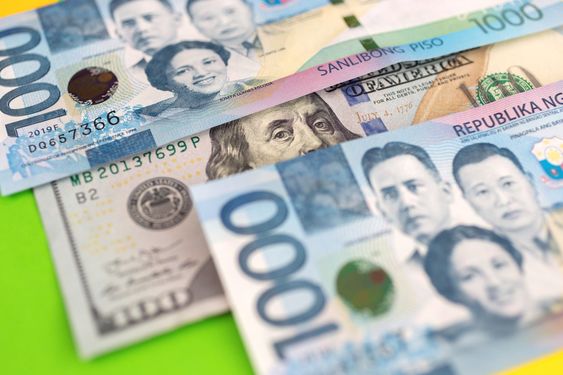George S. Chua l April 24, 2024 l Business Mirror

ON May 2, 2019, the peso was at 51.7808 to the US dollar, and was as strong as P47.66 to $1 on June 1, 2021; hitting a low of 59.0197 on October 10, 2022. Currently the peso is at a little over 57 to the greenback, meaning our currency devalued by about 10 percent over the last five years. More significantly, the peso devalued 23.79 percent from 47.66 to 59.02 in only a span of 16 months!
For the Filipino families of the 2.33 million overseas workers from the Philippines and our exporters, a weak peso is good news since they will now get more pesos for the dollars they earn. For the rest of us locals, a weak peso is not good news since it will now cost us more pesos to pay for imported goods, which is most of the items we consume since we are a net importer.
If you have some money to set aside or invest, how do you deal with this situation? I am not talking about high net-worth individuals who have private banking accounts overseas, they can fend for themselves. I would like to focus on the middle class who has to work hard for their money.
The first item to consider is to take a position in the dollar; as they say, “if you can’t beat them, join them.” Knowing that the peso could be eroded by devaluation, think about keeping some of your money in another currency, the most popular of which is the US dollar. Many people grew up when the purchase of foreign currencies and keeping of dollar accounts was restricted and highly regulated. Under certain documented transactions, Filipinos are now allowed to purchase foreign currencies, including the US tender. Please check with your bank for the documents required.
Once you have the dollars, you can put them to work by placing them in a dollar time deposit, which currently gives a net yield within 1 percent of the equivalent peso time-deposit rate. Depending on how much dollars you have and which bank you use, other alternative investment instruments—such as US Treasuries, corporate notes as well as ROP bonds—provides a higher rate of return. Since the US dollar is less volatile than the Philippine peso, you improve your chances of achieving a better rate of return.
To further improve your returns, knowing when to buy the dollars using your pesos is also useful. While no one has a crystal ball to see the future, there are certain historical trends that we can make use of through the law of supply and demand. Typically, the peso will appreciate in value when there is a demand for it and conversely, the dollar will weaken versus the peso when more people are selling the dollars to buy pesos. Data from the BSP showed that in 2023, remittances from OFWs amounted to $37.2 billion.
So when do most of this money comes in? As expected, there will be spikes in remittances during the start of classes when tuition has to be paid and, of course, during Christmas time—for gift giving, celebrations and as it is also a popular time for the OFWs to come home. If you could time your US dollar purchase towards June/July or November/December, chances are you will be getting a more favorable rate.
It is worthwhile considering portfolio diversification, to help maintain your asset valuation. You will need all the help you can get to prepare for your retirement.
*** The views and comments of George S. Chua are his own and not of the newspaper or the Financial Executives Institute of the Philippines (Finex). The author was the president of Finex in 2016 and the president of the Federation of Philippine Industries from 2010 to 2020. Dr. Chua is an active entrepreneur in fintech, broadcast, media, telecommunications, properties and a regular member of the National Press Club. He is also a Professorial Lecturer 2 at the University of the Philippines’s Diliman and BGC campuses and a Trustee of the Finex Foundation. Comments may be sent to georgechuaph@yahoo.com or gschua@up.edu.ph. Photo from Pinterest.

